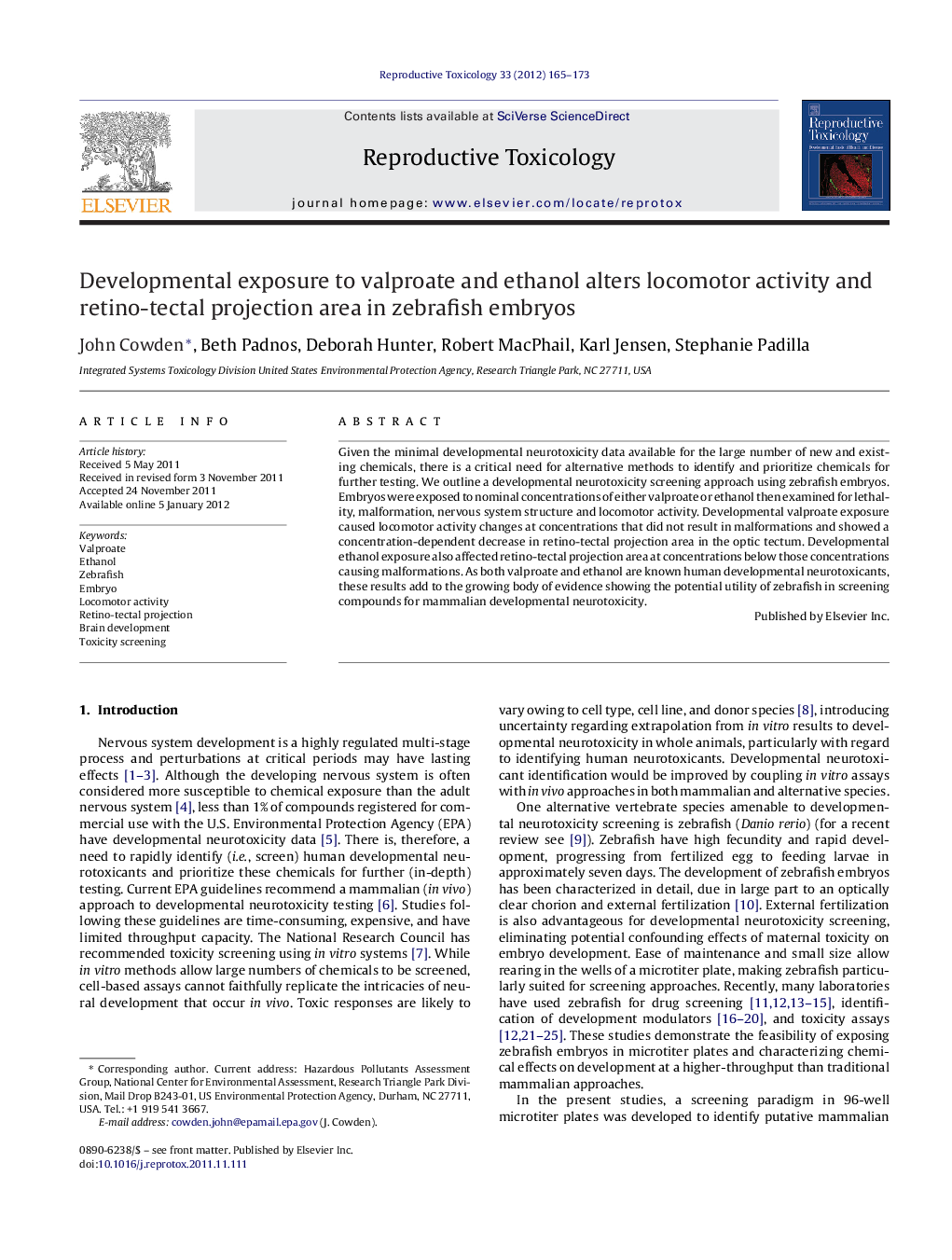| Article ID | Journal | Published Year | Pages | File Type |
|---|---|---|---|---|
| 2593848 | Reproductive Toxicology | 2012 | 9 Pages |
Given the minimal developmental neurotoxicity data available for the large number of new and existing chemicals, there is a critical need for alternative methods to identify and prioritize chemicals for further testing. We outline a developmental neurotoxicity screening approach using zebrafish embryos. Embryos were exposed to nominal concentrations of either valproate or ethanol then examined for lethality, malformation, nervous system structure and locomotor activity. Developmental valproate exposure caused locomotor activity changes at concentrations that did not result in malformations and showed a concentration-dependent decrease in retino-tectal projection area in the optic tectum. Developmental ethanol exposure also affected retino-tectal projection area at concentrations below those concentrations causing malformations. As both valproate and ethanol are known human developmental neurotoxicants, these results add to the growing body of evidence showing the potential utility of zebrafish in screening compounds for mammalian developmental neurotoxicity.
► We outline a developmental neurotoxicity screen using zebrafish embryos. ► Neurotoxic endpoints include retino-tectal projection area and locomotor activity. ► Valproate and ethanol were developmentally neurotoxic to zebrafish embryos. ► Neurotoxicity was observed at doses below those resulting in overt toxicity. ► Zebrafish embryo screens may help identify putative developmental neurotoxicants.
